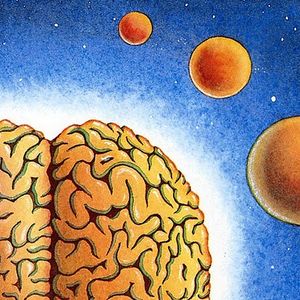The Future is now. We are living it everyday.[1]

The name “Big Jelly” is taken from a story by Bruce Sterling and Rudy Rucker about big ideas brought about by technoculture. It is both the brain and the technology the the brain produces.
Perhaps the defining characteristic of “Big Jelly” is unusual collaborations, fusions, juxtapositions. It means the bringing together of forces that do not usually mix to form something new, resistant to label, squishy. This union makes ripples that have implications on other areas of culture that, before networked technologies, might not have cared or even realized. Big Jelly is the center of this outward expansion, the brain controlled and shaped by external technocultural forces. Big Jelly is a collaboration about this unique time we find ourselves in, between what we were before the network, what we bring with us into the network, and the funkiness that will become as a result.
Big Jelly publishes articles, essays, notes, and reviews about technoculture, science fiction, and futurism. Have an idea? Want to contribute? Submit to our group or send us an idea.
Contribution Guidelines
The Big Jelly Publication, or Big Jelly, publishes essays, articles, notes, and multimodal posts that address any aspect of science fiction, technoculture, or posthumanism. We particularly like experimental non-fiction works that address the nexus of human-computer interaction and consider the symbiotic relationship that will lead the next phase of human evolution.
| “ | By the late twentieth century, our time, a mythic time, we are all chimeras, theorized and fabricated hybrids of machine and organism; in short, we are cyborgs. . . . The cyborg is a creature in a post-gender world . . . resolutely committed to partiality, irony, intimacy, and perversity. It is oppositional, utopian, and completely without innocence. | ” |
| — Donna Haraway, “A Cyborg Manifesto” | ||
Submissions
Big Jelly wants anything you would care to write about technoculture — particularly in its effects on “humanity” in science fiction texts. Examples of what we publish include:
- Reviews, interpretations, analyses, or commentary about technoculture in literature, film, television, music, etc.;
- Reviews, interpretations, analyses, or commentary about a particular artist’s work(s) in science, technology, philosophy, futurism, cryptozoology, etc.;
- Notes about a specific portion of a technocultural work, like a theme, character, or motif;
- Personal experiences with technoculture, transhumanism, or alternative constructions of self, etc.
- Essays or formal literary criticism from any critical perspective;
- Scans or transcripts of original artifacts about humanity’s history and coevolution with technology;
- Multimodal pieces — like photo essays, podcasts, etc. — concerning technoculture;
- Blog posts that have been previously published as long as the whole post is present (cross-posting is acceptable as long as a link to the original post is provided).
Contributors
If you would like to write for our growing collection, please consider the following:
- you are writing primarily about the collection’s subject;
- you are writing more than just an essay like you would on dead trees— i.e., using Medium’s multimedia capabilities;
- you are familiar with what we’ve (and the web) already published and use links where appropriate to support your ideas;
- you have a fair and well-supported take on your subject;
- you are writing more than just a commercial or advertisement;
- you have a completed profile on Medium, including a non-generic avatar.
Writing
Once you have been added as a writer, you should prepare your post for submission. When doing this:
- follow the Medium Style Sheet;
- learn how to write with Medium (we recommend these best practices and these tips and tricks);
- cite all of your sources — if applicable — using Digital Citation (this is publishing for the screen, not paper);
- proofread your post for typos and common mistakes (we recommend the Editor’s Checklist or getting a friend to help);
- revise your style for web readability (we recommend the Hemingway Editor);
- select images and other multimedia (this is a multimodal platform, after all) that is the highest quality possible (images should not be low resolution — especially when using a title image; find some high-quality stock images).
All set? Submit your post as a draft to the publication. Thanks for your interest in Big Jelly.
Assignments
Notes
- ↑ The original introduction to Big Jelly, a website for science fiction, futurism, and technoculture. I had the great idea to do a group blog with friends. That never works.
